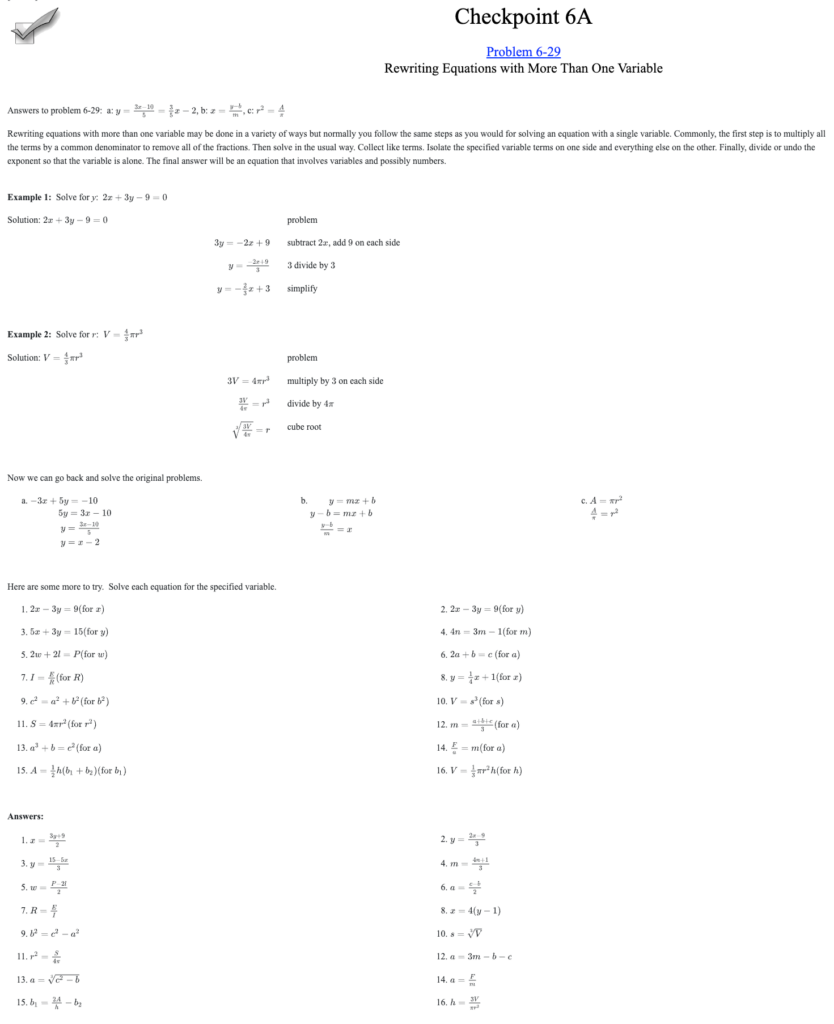Lorna Vazquez, Teacher Leader, Neillsville, WI
Last month I found myself on an airplane high above the Rockies reflecting on the week I had just spent writing math assessments with 31 other educators. The normal introductory chitchat with the stranger in the seat next to me quickly made it apparent that I had just experienced something the average person finds hard to comprehend.
It is one of the things I find most amazing about CPM and why I am such a fan – namely the fact that this company was founded by and continues to grow by listening to what teachers have to say. If it has the CPM logo on it, you can bet teachers wrote it.
Last spring (as they realized that in this world of CCSS where benchmarks have been raised and the Mathematical Practice standards are helping redefine mathematics as more than a collection of unrelated formulas and procedures) the directors of CPM saw a need to update and enhance the test bank. They asked for teachers who were interested in creating quality assessments to submit applications for a weeklong job as assessment writers. From the numerous applications submitted, the directors invited 32 teachers to come to Sacramento to join this writing project in late July
We reported at the designated hotel on Sunday night from across the country. Some of us were veterans with many years of teaching under our belts. Some were “newbies” – new to teaching or new to CPM. All of us had first hand classroom experience and a desire to support teachers in the complex job of making more math make more sense for all students.
In typical CPM fashion we participated in a team sorting activity as we entered the room bright and early Monday morning. After introductions and a word about logistics from Karen Wootton who facilitated the week, we heard from Judy Kysh who shared suggestions for improving our question writing skills. Judy showed ways to ask questions that will uncover student thinking. We would follow her lead as many of the questions we would write this week would be asking students to: show more than one method or compare methods, give examples illustrating a concept or type of problem, identify and correct errors, or pause, think and then describe a strategy. [Read more about these
in the next article titled Assessment Week Warriors.]
Using a carousel study team strategy, we prioritized work targets for the week as a whole group before breaking out into course level teams. Different course teams tackled different projects. Some began writing projects while some designed sample chapter tests. Some teams brainstormed the kinds of common misconceptions students have about the concepts in a given course and began to write questions to address and assess those misconceptions. Other teams explored how question types are changing in this age of computerized testing and wrote similar types of questions that could be tagged to CCSS standards.
The process was entirely collaborative and we got lots of opportunities to practice our team skills. Just as we expect our students to work well in their teams, we were expected to “construct viable arguments and critiques the reasoning of others.” Using Dropbox, whatever we wrote we placed it in a folder for multiple reviews. By day we wrote and by night we read what others had written, commenting and clarifying, suggesting and adding to what we found. We did lots of math, working out proposed problems, checking answers, and trying different approaches, and were even heard suggesting that “different numbers might make this question more interesting. What do you think?”
It may sound – as it did to my airplane seatmate – like a grueling somewhat tedious week. But it was not. It was quality professional development for everyone there with an added bonus of more quality CPM material for all to use. In the upcoming weeks the assessments that were written will be edited further and reformatted. Then CPM programmers will add them to the testbank.
I learned a lot over the week and I am looking forward to hearing how the new material is received. I hope teachers will continue to share their feedback secure in the knowledge that CPM listens. Here is what I took away from the week about assessment – written from a 35,000-foot view:
Define what is being assessed.
Clearly define what you expect students to know and be able to do at the time the test will be given. Ask yourself the following questions: What concepts and skills should students have mastered by now? What concepts and skills are still developing? In CPM Core Connection courses, a list of such concepts and procedures is readily available in the assessment guide at the start of each chapter. Because concepts are revisited over the course of the year in ever deepening spirals, students’ understanding of those concepts will change. “Growth over time” (GOT) problems are designed to help measure this deepening understanding and increasing skill levels.
Another guide to help determine what concepts should be assessed at what point in time is the CCSS document and the accompanying progression documents (http://ime.math.arizona.edu/progressions/.) Remember that the structure of the CCSS is complex and individual standards often require many lessons or even chapters to cover completely. The Common Core State Standards are not designed to provide a simple sequential list of standards to be checked off at certain definitive points.
Not only teachers, but students as well, should have a clear idea of what is being assessed. Translating standards language into learning targets written in student friendly language is recommended.
Consider the Depth of Knowledge (DOK) levels of each test question.
Considering the DOK level or levels of each question will help to clarify your expectations. Assessing some skills and procedures may effectively be accomplished with lower level DOK questions, and desired responses to those questions may be relatively direct and straightforward. Assessing for conceptual understanding may require questions written at higher DOK levels with answers that require detailed explanations or examples. “Tiered” problems that assess at multiple DOK levels can provide access to students who are just beginning to understand a concept while providing opportunities for other students to demonstrate their deeper levels of understanding. Answers to these “Low threshold – high ceiling” tasks provide information about the diverse levels of understanding typically present in any classroom.
For more information on DOK levels: http://static.pdesas.org/content/documents/M1-Slide_19_DOK_Wheel_Slide.pdf
Always take the test for a test run.
Always take the test yourself and be mindful of the cognitive demand required to answer the questions. Ask yourself: What will an answer to this question tell me about what the student knows? What would an exemplary response look like? What is the minimum knowledge I would have to have in order to answer this question? Did I use any of the mathematical practice standard in answering the questions?
If possible, have a colleague who did not take part in creating the test take it as well. Fresh eyes are likely to catch problems with wording that you may have missed. Most teachers estimate that their students will take three to five times as long to take a test as they do, so time yourself and adjust the test accordingly.
When the test is done and scored – you are not.
How students did on the test provides much more data that just grades. There is a wealth of information embedded in the student answers. How they approached problems, which ones they excelled on, which were particularly difficult, and what trends you see will not only inform your teaching but also tell you how the test itself might be improved. Now you are ready to analyze what implications the test has for your teaching and put what you’ve learned into practice.
Good assessments (both formative and summative) are snapshots that reveal what students know and are able to do at a certain point in time. Carefully written assessments will include questions that elicit student reasoning and process as well as accurate answers. Take care to write the best assessment possible that will provide you and the student with a wealth of information.


